Experimental Research and Multi-Physical Field Coupling Simulation of Electrochemical Machining Based on Gas–Liquid Two-Phase Flow
Abstract
:1. Introduction
2. Methods and Experiments
3. Results and Discussion
3.1. Simulation Analysis of Multiple Physical Fields in ECM Gap of Cooling Hole
3.2. Analysis of Experiment and Simulation Results
4. Conclusions
Author Contributions
Funding
Institutional Review Board Statement
Informed Consent Statement
Data Availability Statement
Acknowledgments
Conflicts of Interest
References
- Tang, Z.G.; Guo, T.M.; Fu, Y.; Hui, Z.; Han, C.S. Research present situation and the development prospect of nickel-based super alloy. Met. World 2014, 1, 36–40. [Google Scholar]
- Wang, F.; Xiao, J.; Yue, L.; Wu, X.Y.; Zhao, J.S. Common Key Technology of Precise Electrochemical Machining and Its Application in Aviation Manufacturing. Electromach. Mould. 2020, 1, 1–6. [Google Scholar]
- Du, J.H.; Deng, Q.; Qu, J.L.; Lu, X.D.; Wang, M.Q.; Bi, Z.N.; Xu, T.H. Development Trend of Manufacturing Technology of Alloy GH4169 Disk Forging. J. Iron Steel Res. 2011, 23, 130–333. [Google Scholar]
- Han, J.C. Recent developments in turbine blade internal cooling. N. Y. Acad. Sci. 2001, 5, 162–178. [Google Scholar] [CrossRef] [PubMed]
- Zhang, C.X.; Xu, Z.Y.; Hang, Y.S.; Xing, J. Effect of solution conductivity on tool electrode wear in electrochemical discharge drilling of nickel-based alloy. Int. J. Adv. Manuf. Technol. 2019, 103, 743–756. [Google Scholar] [CrossRef]
- Wang, G.Q.; Zhang, Y.; Li, H.S.; Tang, J. Ultrasound-assisted through-mask electrochemical machining of hole arrays in ODS super alloy. Materials 2020, 13, 5780. [Google Scholar] [CrossRef] [PubMed]
- Niu, S.; Qu, N.S.; Yue, X.K.; Li, H.S. Effect of tool-sidewall outlet hole design on machining performance in electrochemical mill-grinding of Inconel 718. J. Manuf. Process 2019, 41, 10–22. [Google Scholar] [CrossRef]
- Cheng, C.-P.; Wu, K.-L.; Mai, C.-C.; Yang, C.-K.; Hsu, Y.-S.; Yan, B.-H. Study of gas film quality in electrochemical discharge machining. Int. J. Mach. Tools Manuf. 2010, 50, 689–697. [Google Scholar] [CrossRef]
- Zhang, Y.; Xu, Z.Y.; Zhu, Y.; Zhu, D. Machining of a film-cooling hole in a single-crystal super alloy by high-speed electrochemical discharge drilling. Chin. J. Aeronaut. 2016, 29, 560–570. [Google Scholar] [CrossRef] [Green Version]
- Chung, D.K.; Lee, K.H.; Jeong, J.; Chu, C.N. Machining characteristics on electrochemical finish combined with micro EDM using deionized water. Int. J. Precis. Eng. Manuf. 2014, 15, 1785–1791. [Google Scholar] [CrossRef]
- Zou, H.; Yue, X.M.; Luo, H.X.; Liu, B.H.; Zhang, S.Y. Electrochemical micromachining of micro hole using micro drill with non-conductive mask on the machined surface. J. Manuf. Process 2020, 59, 366–377. [Google Scholar] [CrossRef]
- Li, Z.L.; Cao, B.; Di, Y. Research on Multi-Physics Coupling Simulation for the Pulse Electrochemical Machining of Holes with Tube Electrodes. Micromachining 2021, 12, 950. [Google Scholar] [CrossRef] [PubMed]
- Li, Z.L.; Di, Y. Analysis of multi-physics coupling of small holes in gh4169 alloy by electrolytic processing of tube electrodes. Micromachining 2021, 12, 828. [Google Scholar] [CrossRef] [PubMed]
- Wang, M.H.; Wang, J.J.; Tong, W.J.; Chen, X.; Xu, X.F.; Wang, X.D. Multi-physical Field in IEG and Micro-dimple Forming in Ultrasonic Rolling Electrochemical Micromachining. Acta Armamentarii 2020, 04, 783–791. [Google Scholar]
- Zhou, X.C.; Cao, C.Y. Simulation of ECM temperature field based on COMSOL. J. Qiqihar Univ. 2018, 34, 41–44. [Google Scholar]
- Jiang, W.; Zhang, Y.; Chen, Y.L.; Yu, F.D.; Ye, H.J. Multiphysics Numerical Simulation of High Frequency Short Pulse ElectrochemicalMachining for Blade. Aeronaut. Manuf. Technol. 2016, 18, 69–74. [Google Scholar]
- Li, Z.L.; Di, S.C. Research on Accuracy Control of Deep Small Holes by Pulse Electrochemical Machining. Acta Armamentarii 2012, 33, 414–418. [Google Scholar]
- Qu, N.S.; Liu, Y.; Zhang, J.Z.; Fang, X.L. State-of-Art and Outlook on Electrochemical Milling. Electromach. Mould. 2021, 2, 1–14. [Google Scholar]
- Liu, W.D.; Ao, S.S.; Li, Y. Effect of anodic behavior on electrochemical machining of TB6 titanium alloy. Electrochim. Acta 2017, 233, 190–200. [Google Scholar] [CrossRef]
- Niu, S.; Qu, U.S.; Fu, S.X. Investigation of inner-jet electrochemical milling of nickel-based alloy GH4169/Inconel 718. Int. J. Adv. Manuf. Technol. 2017, 93, 2123–2132. [Google Scholar] [CrossRef]
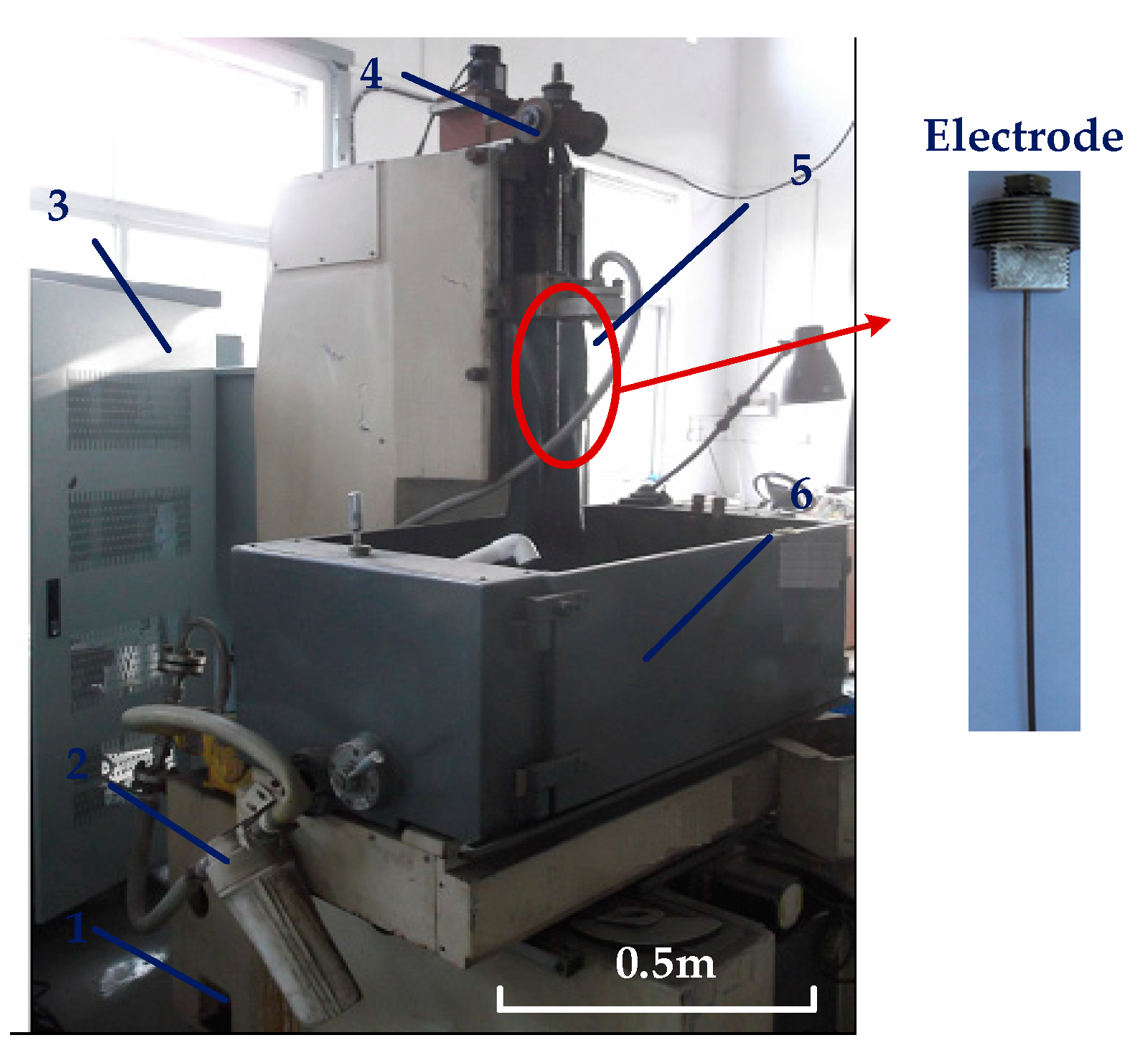
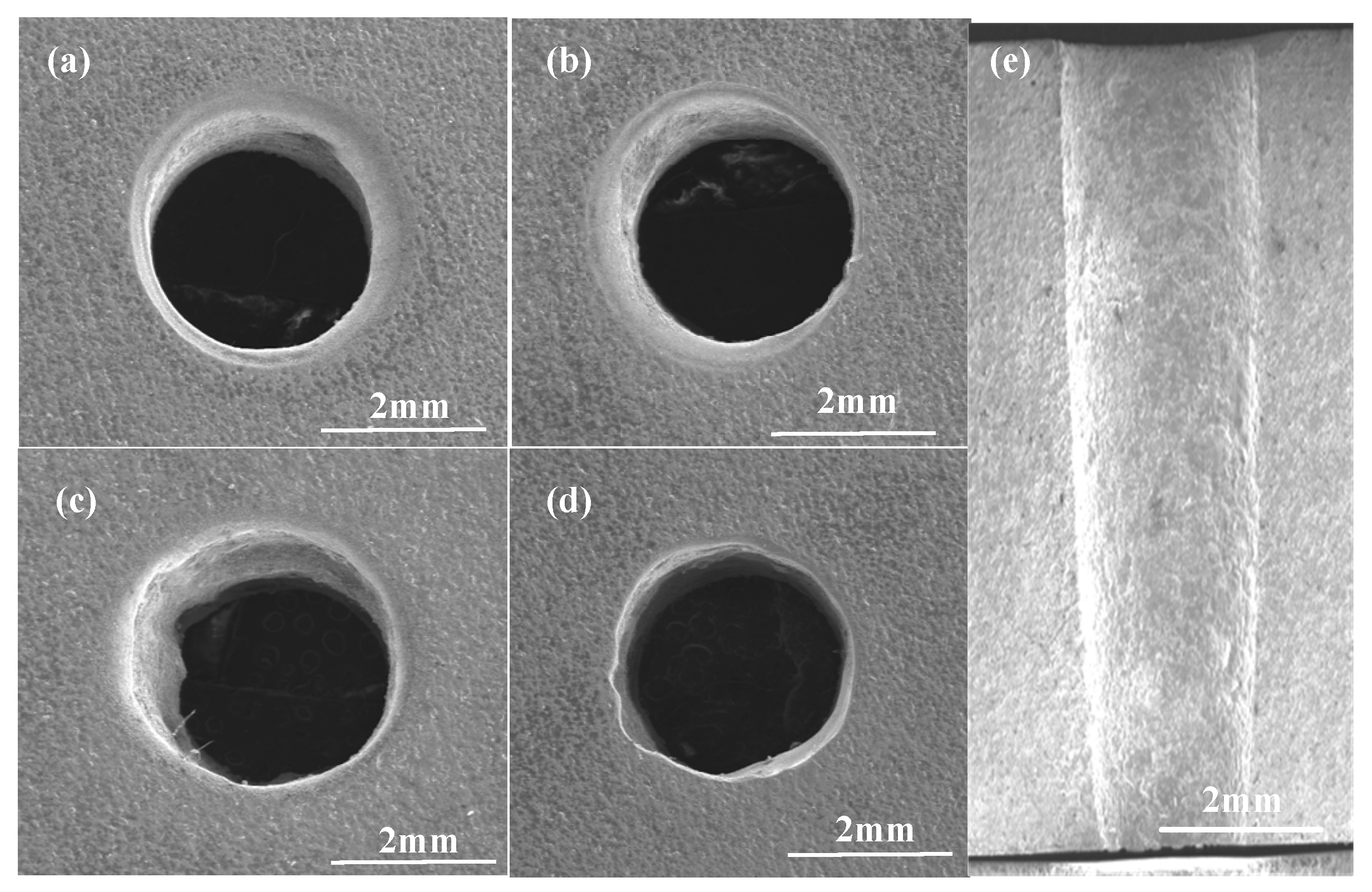
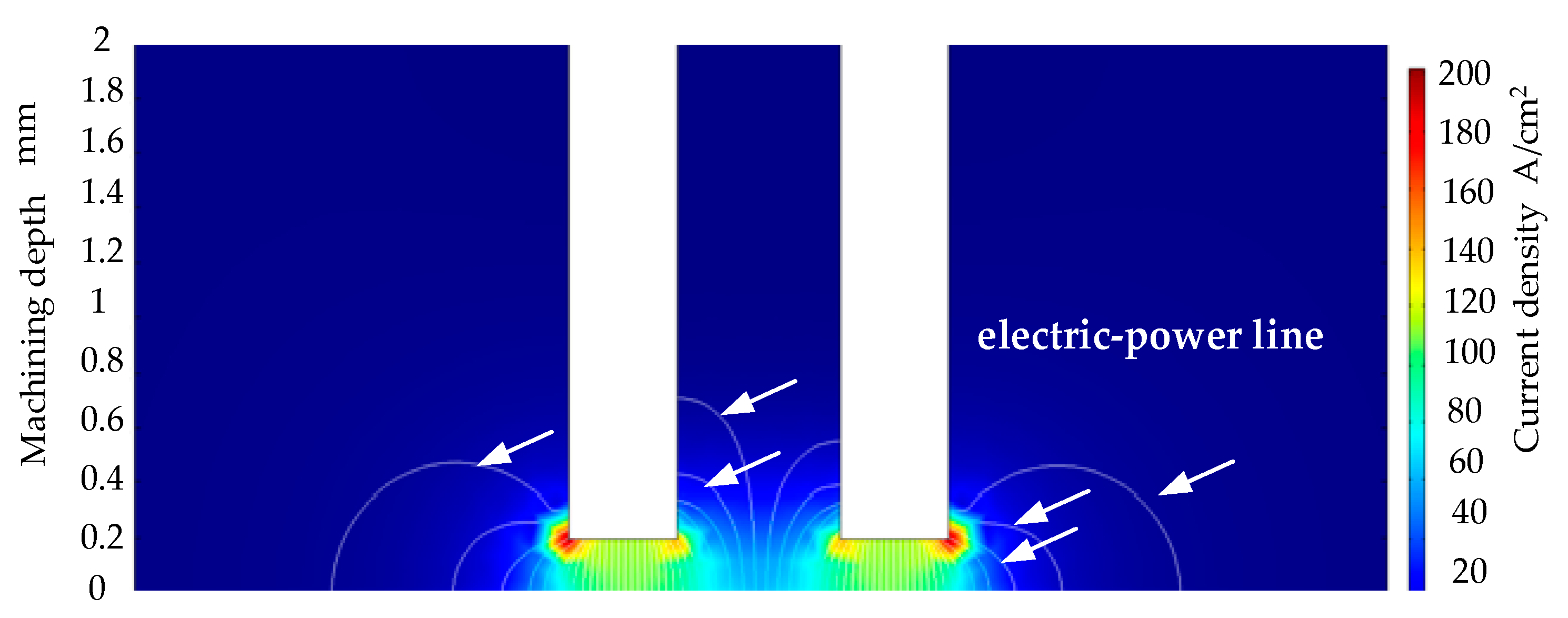
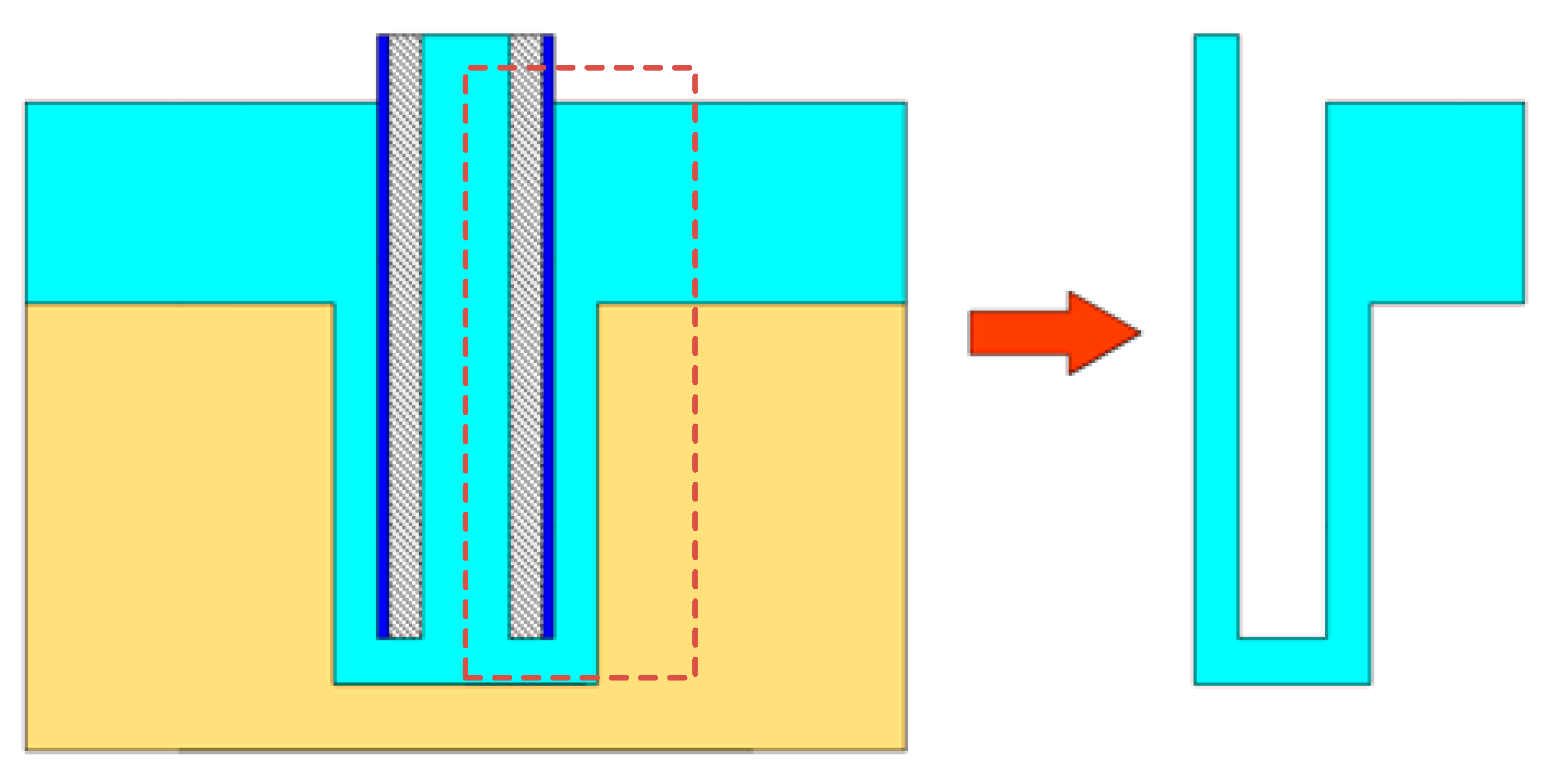


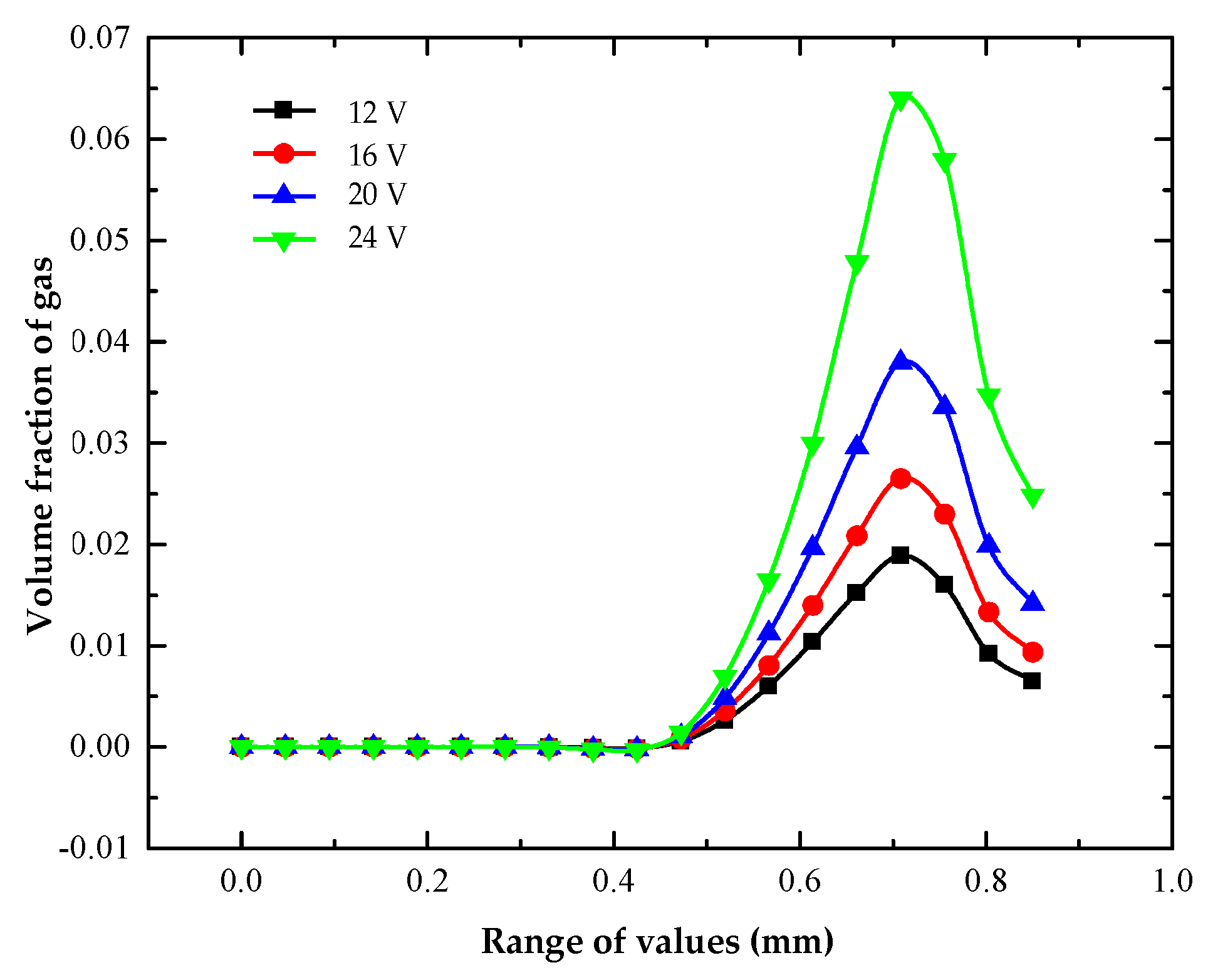
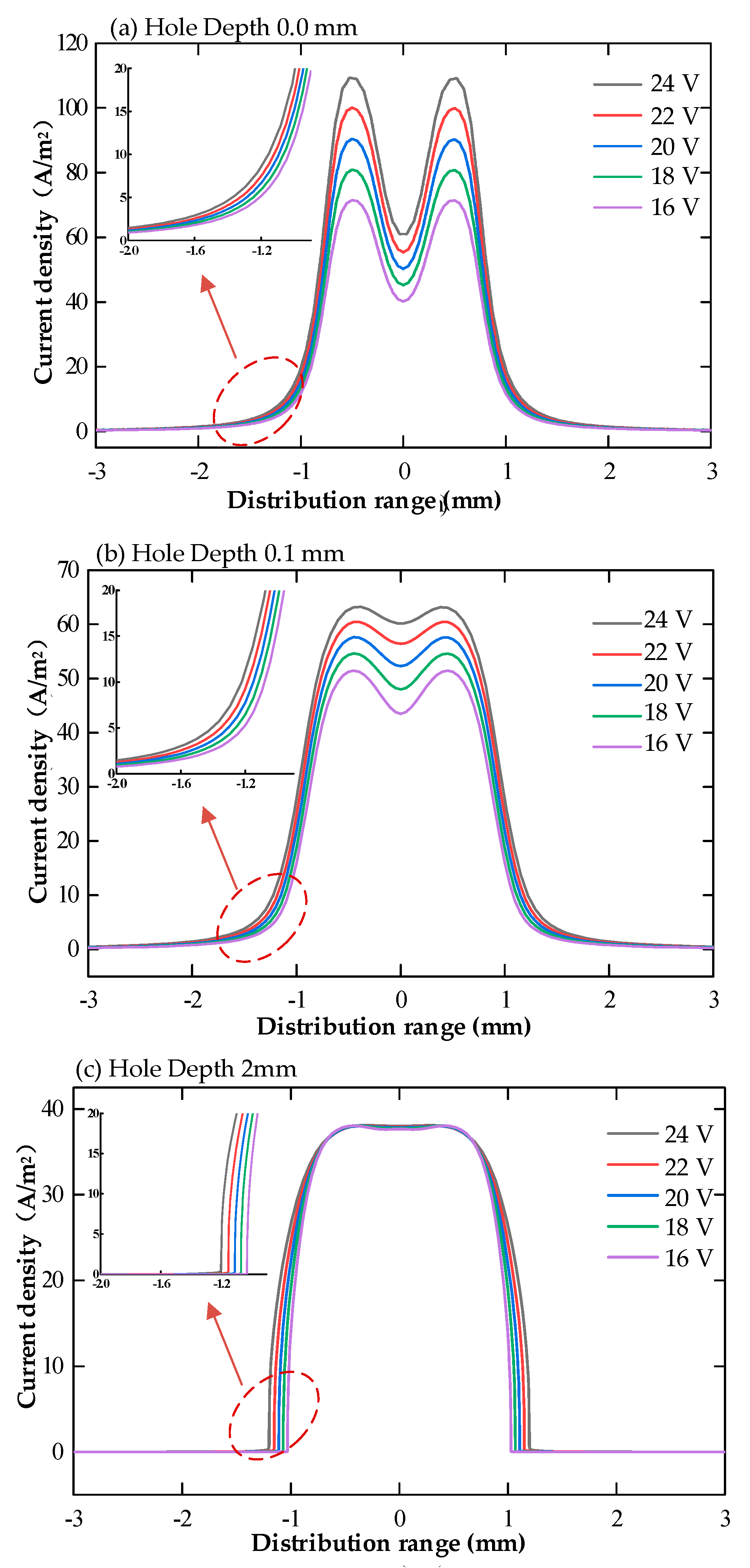
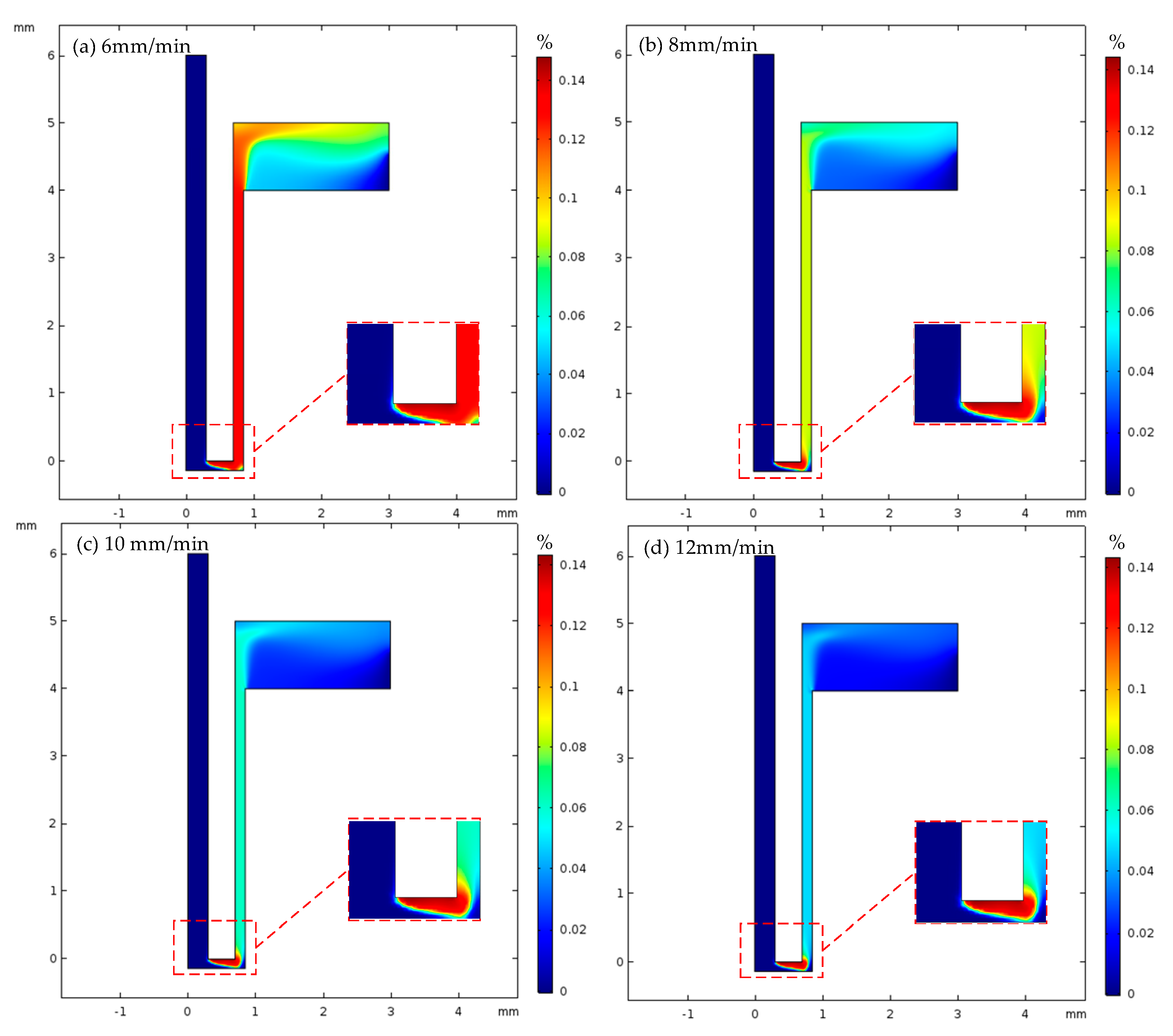



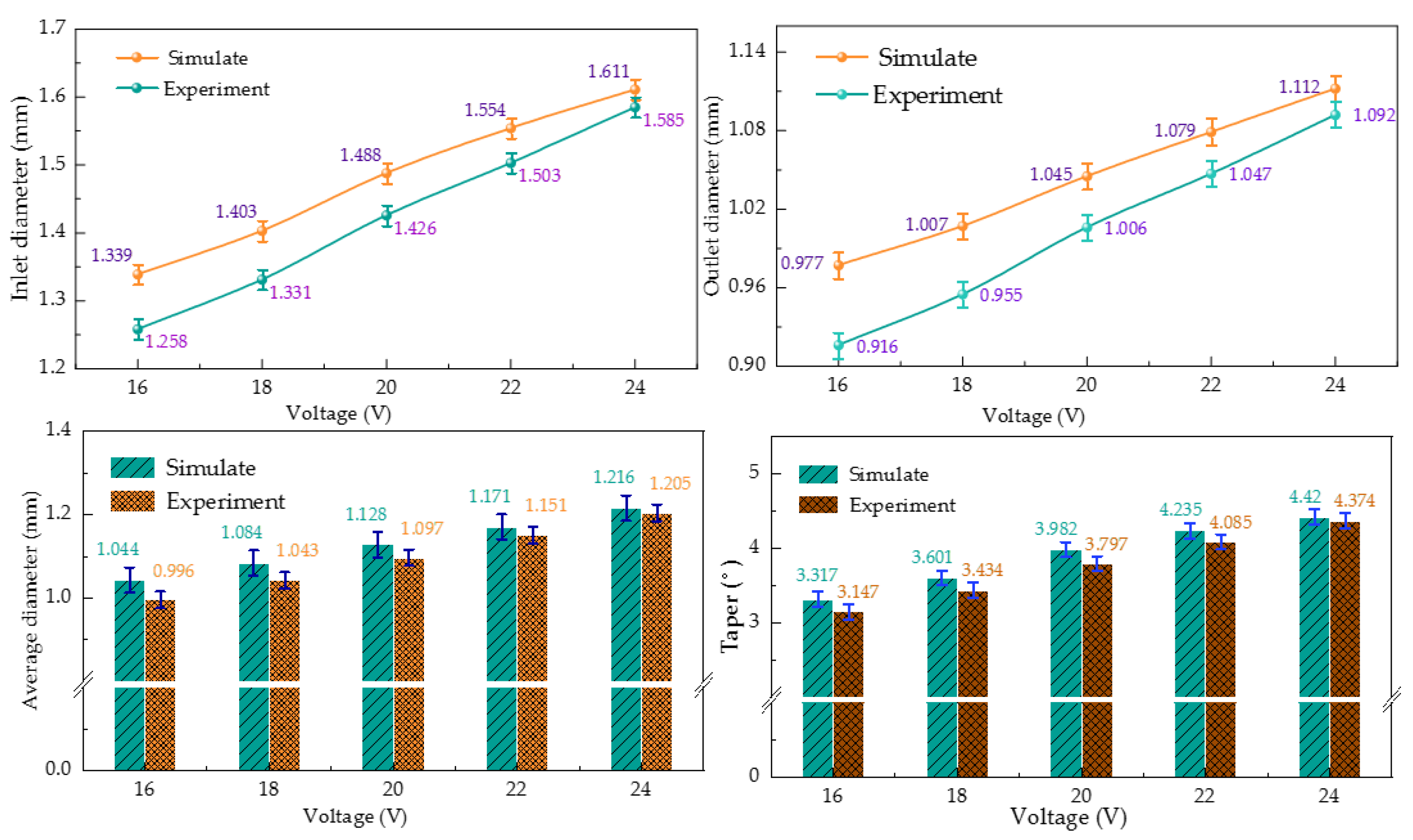
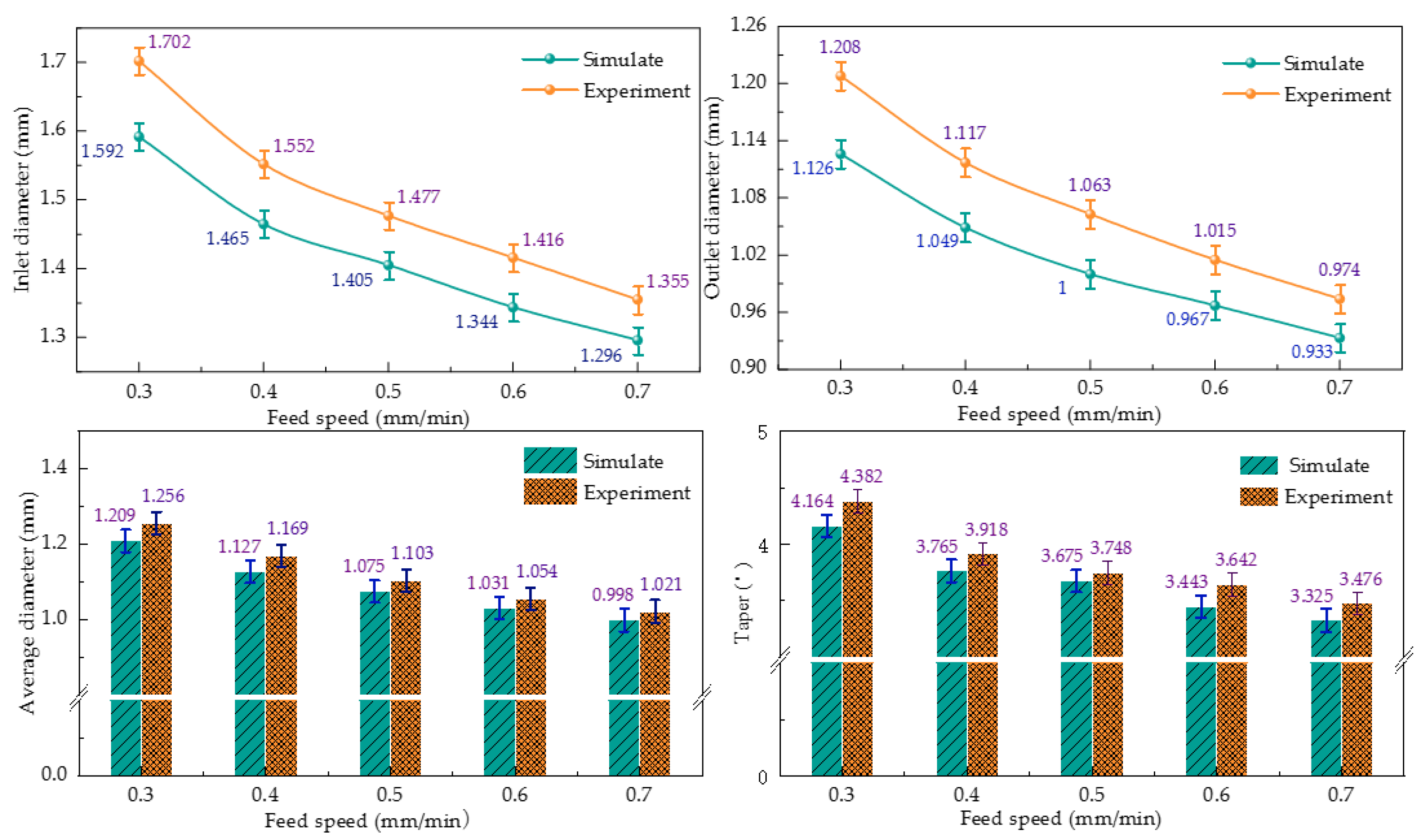
| Experimental Project | Condition |
|---|---|
| Tool electrode | Titanium alloy tube electrode (covered with insulating film) |
| Workpiece | GH4169 nickel-based superalloy |
| Processing voltage | 12–24 V DC voltage [12,13] |
| Electrolyte concentrations | 16% sodium nitrate solution |
| Feed rate | 6–12 mm/min [12,13] |
| Element | Ni | Cr | Nb | Mo | Ti | AI | Fe |
|---|---|---|---|---|---|---|---|
| Atomic mass | 59 | 52 | 93 | 96 | 47 | 27 | 56 |
| Percentage | 50–55 | 17–21 | 4.75–5.5 | 2.8–3.3 | 0.65–1.15 | 0.2–0.8 | Margin |
| Simulation Parameters | Values and Units |
|---|---|
| Liquid specific heat capacity | 4200 J/(kg·K) |
| Hydrogen specific heat capacity | 800 J/(kg·K) |
| Liquid density | 1200 kg/m3 |
| Hydrogen density | 89.9 × 10−3 kg/m3 |
| Liquid heat transfer coefficient | 0.64 [W/(m·K)] |
| Hydrogen heat transfer coefficient | 0.16 [W/(m·K)] |
| Dynamic viscosity | 1.01 × 10−3 Pa·s |
| Bubble diameter | 3 × 10−5 m |
| Initial temperature | 293.15 K |
| Temperature correlation coefficient | 0.025 |
| Gas correlation coefficient | 0.15 |
Publisher’s Note: MDPI stays neutral with regard to jurisdictional claims in published maps and institutional affiliations. |
© 2022 by the authors. Licensee MDPI, Basel, Switzerland. This article is an open access article distributed under the terms and conditions of the Creative Commons Attribution (CC BY) license (https://creativecommons.org/licenses/by/4.0/).
Share and Cite
Li, Z.; Li, W.; Dai, Y. Experimental Research and Multi-Physical Field Coupling Simulation of Electrochemical Machining Based on Gas–Liquid Two-Phase Flow. Micromachines 2022, 13, 246. https://doi.org/10.3390/mi13020246
Li Z, Li W, Dai Y. Experimental Research and Multi-Physical Field Coupling Simulation of Electrochemical Machining Based on Gas–Liquid Two-Phase Flow. Micromachines. 2022; 13(2):246. https://doi.org/10.3390/mi13020246
Chicago/Turabian StyleLi, Zhaolong, Wangwang Li, and Ye Dai. 2022. "Experimental Research and Multi-Physical Field Coupling Simulation of Electrochemical Machining Based on Gas–Liquid Two-Phase Flow" Micromachines 13, no. 2: 246. https://doi.org/10.3390/mi13020246






